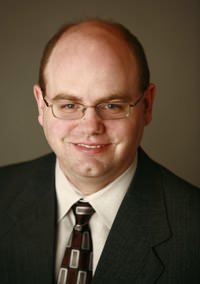Robert Murphy on Teaching at Mises Academy

Economist Robert P. Murphy, who has taught several courses for Mises Academy on microeconomics, energy economics, and Rothbard’s Man, Economy, and State, recently spoke with the Mises Institute about teaching the Academy’s online courses.
Murphy is currently teaching “The Economics of Obamacare” in the Mises Academy.
Mises Institute: Forbes magazine recently suggested that institutions like the Mises Institute might become the universities of the 21st century. Do you see the Mises Academy as breaking down some of these barriers between legacy higher education and new programs like Mises Academy?
Robert Murphy: Oh definitely. I don’t think there’s any doubt that people can get a much better education through online routes, as opposed to brick-and-mortar institutions. The reason is one of simple logistics: You can be anywhere in the world and watch a top-flight instructor teach a course in exactly what you want. In contrast, if you’re at a certain college, you have relatively limited choices about the instructor and the material. In a sense, the internet has to be better, because even the most engaging professors at MIT and so forth can put their physics lectures online.
Don’t get me wrong, there is still something to be said for a live encounter, and it’s hard to recreate the individualized attention you can get in the “Office Hours” at a traditional school. But by definition, those very attributes restrict such education to the few students who are in physical proximity to the desired instructor.
As technology advances further, and instructors become more comfortable with remote teaching, this trend will only continue. The only major stumbling block is official accreditation, but even now I know there are employers and graduate programs that give an extra look at applicants who have a few Mises Academy courses listed on their resumes.
MI: You taught standard classroom-based college courses at Hillsdale. How does teaching at Mises Academy compare?
RM: I don’t want to ignore the friendship and rapport that can develop with “the right bunch of kids” in a traditional college setting. Especially for students whom I knew from Principles, as they worked their way up through the Econ major, that was something special that cannot be reproduced easily online.
On the other hand, I really did not relish teaching a Principles of Micro class to a bunch of non-econ majors, who were only taking my class (perhaps at 8 am) because they had to, for their business or accounting degree. Part of the problem was that I felt I had to teach the “standard stuff” of average cost curves and so forth, in order to make sure they graduated seeing the same things that other college grads would have seen in their econ principles classes.
In total contrast to this type of experience, in Mises Academy classes every single student is there of his or her own choice, and in most cases is paying for it (rather than relying on parents, as with a typical college student). So there’s a lot more enthusiasm on the part of the students, and that helps motivate me as an instructor. Furthermore, since it’s not part of a government-approved curriculum, I don’t feel bad in concentrating on what I think is truly important, rather than the “standard way this is taught elsewhere.”
MI: Is there any such thing as the “typical” Mises Academy student or has there been a lot of variety?
RM: It’s all over the map, at least in my classes. At first I had assumed it would mostly consist of college students, but many of them actually don’t have the time or money for it. I would guess that the majority of my students (I can’t speak for the other Mises Academy classes) are 25 or older and have jobs, or are retired. They are there to learn the material for its own sake, not to check a box.
MI: How do you choose which topics you will cover in your courses?
RM: Some topics have enduring popularity, like the Federal Reserve and Austrian business cycle theory, as well as the “intro” class (which uses my textbook, Lessons for the Young Economist). So we periodically cycle back and offer those courses, as new people come into the Mises Academy orbit. I actually rely on Daniel Sanchez, who directly oversees the Mises Academy, to suggest new course topics, since he is more on-the-ground and knows exactly what other professors have been offering, and knows my particular areas of expertise. For example, it was completely his idea for me to teach a course on energy economics, which was my most recent Academy class.
MI: What have been some of the greatest challenges in teaching through the Mises Academy?
RM: The hardest challenge has been broadcasting the live videos to the students. There is the occasional technical hitch, but that has mostly been solved now, especially if I can be broadcasting from a location with an ethernet connection (as opposed to, say, wifi in a hotel room). It’s still a little weird to be talking to a mute computer camera, rather than lecturing in front of a live crowd and getting feedback, but once you get used to it, it’s not really an issue.








